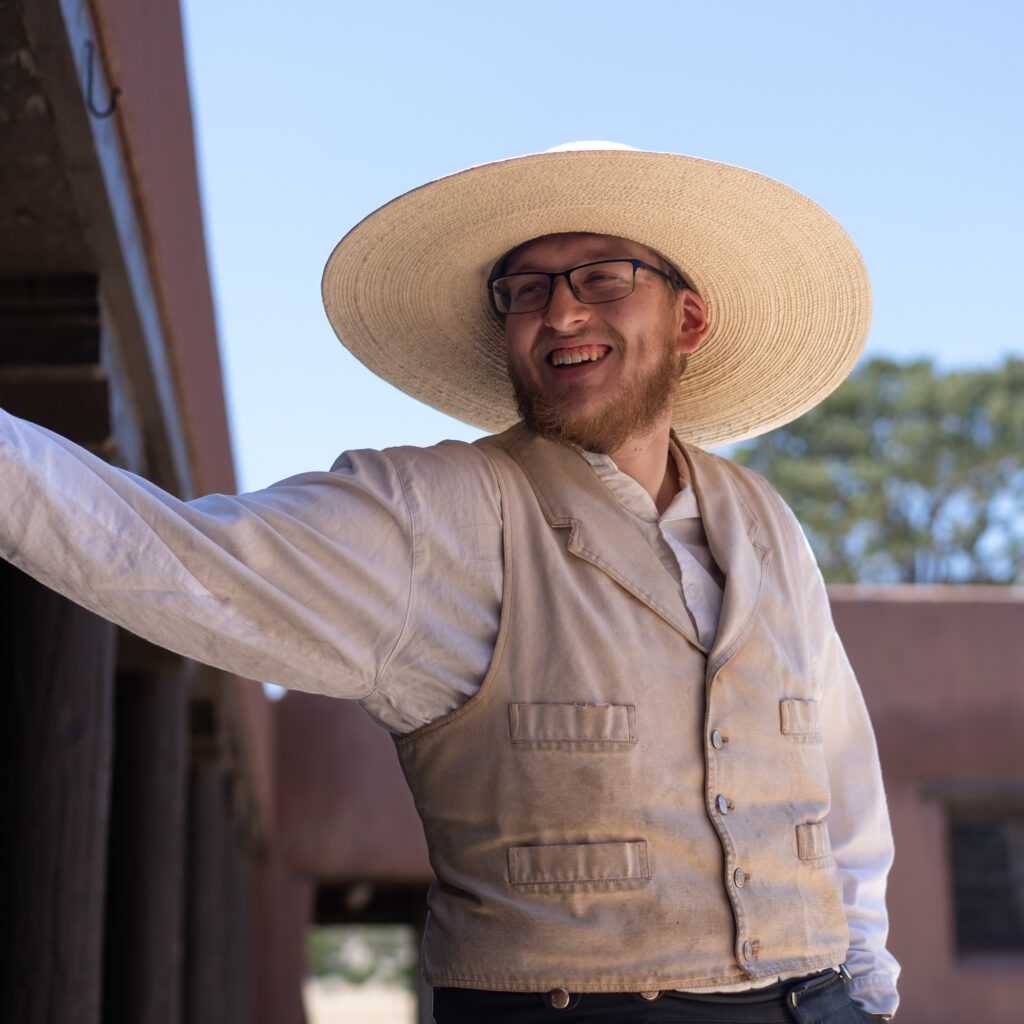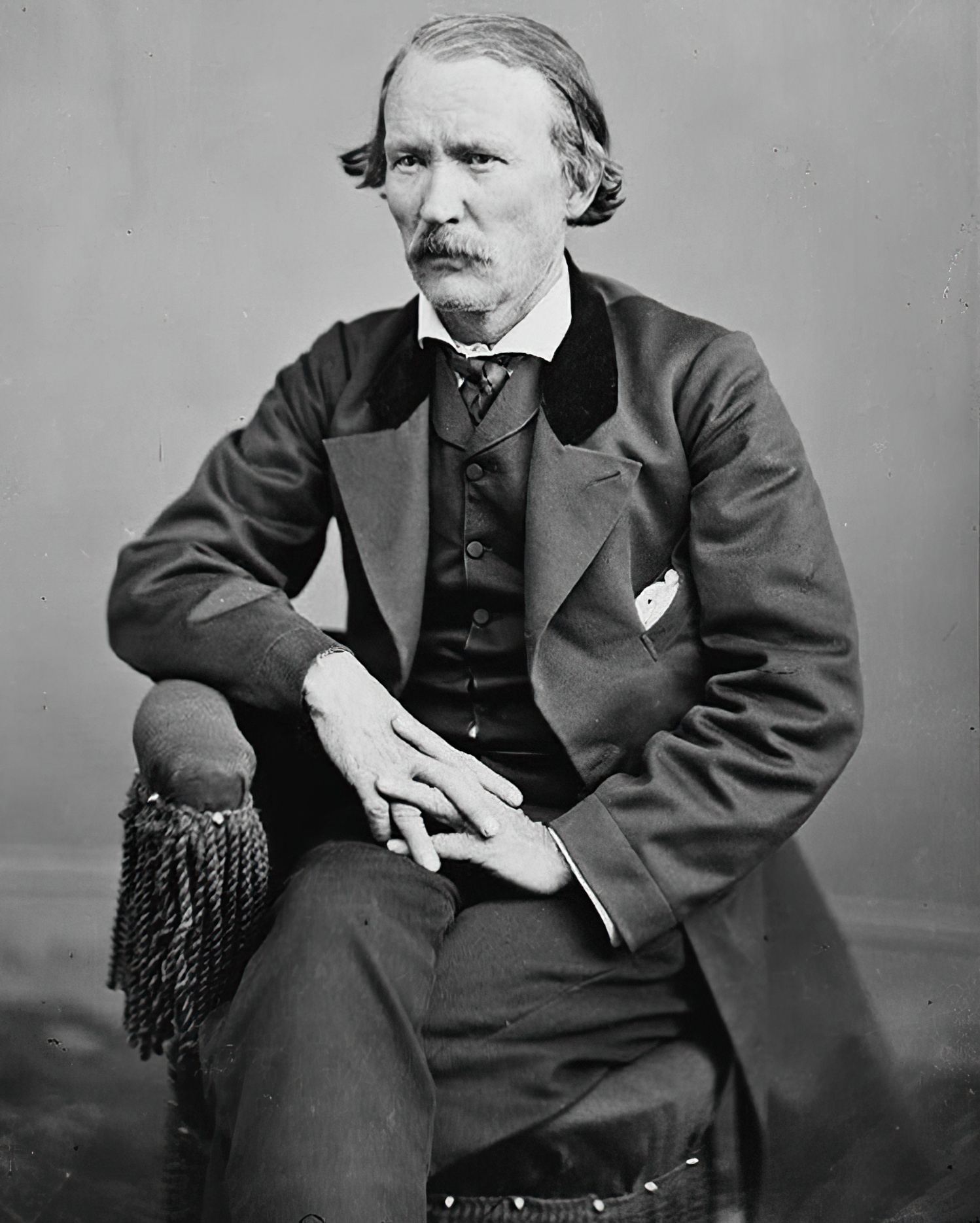
Kit Carson Museum
at Rayado
Open to the Public During the Summer
June 6th — August 10th
Tuesdays & Thursdays
6:00 PM — 9:00 PM
Closed Some Holidays
Please call the National Scouting Museum for tour information: (575) 376-1136.
About the Kit Carson Museum
Rayado was founded by Lucien Maxwell in 1848 at the end of the Mexican-American War as the first plains settlement in New Mexico east of the mountain valleys of the Sangre de Cristo Mountains. The area was far from secure due to marauding Apaches and Comanche, so Maxwell persuaded his friend Kit Carson to help provide security in 1849. A detachment of US Army Dragoons was based at Rayado the following year. After a few years at Rayado, Kit Carson returned to Taos.
Founder Lucien Maxwell left Rayado to found Cimarron in 1857, and his brother-in-law Jesus Abreu and his family took over operations of Rayado Rancho.
In 1950, Scouting America built an adobe museum at Rayado to serve as an interpretive area to portray its history and recount the exploits of Maxwell and Carson. It was named in honor of Kit Carson.
Staff at the Kit Carson Museum dress in period clothing and demonstrate frontier skills and crafts like blacksmithing, cooking, shooting, and farming. Each room in the museum is outfitted with reproduction furniture and objects typical of New Mexico in the 1850s. The Rayado Trading Company, located at the museum, sells books, maps, reproduction tools and equipment, moccasins, and blankets.

Meet The Founders

Kit Carson was a legendary American frontiersman born in Kentucky. Raised in Missouri, he ran away at 16 to join a merchant caravan to Santa Fe, eventually becoming a fur trapper based in Taos. Carson became renowned for his wilderness skills and courage. He married into Native American families before settling with his third wife, Maria Josefa Jaramillo. Carson served as a guide for explorer John C. Frémont, helping chart western trails, which brought him national fame.
Carson’s life intersected with key events in U.S. westward expansion, including the Mexican-American War and the conquest of California. After the war, he settled in New Mexico, investing $2,000 in a ranching and farming enterprise with Lucien Maxwell. The two purchased stock and seeds and hired workers to erect buildings on Rayado Creek. Rayado was a stage station along the mountain branch of the Santa Fe Trail. Carson built a small house there and lived in the area for a short time. Appointed Indian agent in 1854, he later served in the Civil War, directing campaigns against the Navajo, culminating in the tragic “Long Walk.” Despite his compassion toward Native Americans, he was part of controversial policies of displacement.
In later years, Carson moved to Colorado, continued ranching, and took leadership at Fort Garland. He traveled to Washington, D.C., with Ute chiefs in 1868, but soon after returning, his wife died. Heartbroken and in declining health, Carson died shortly afterward.

Lucien Maxwell was a prominent American rancher, mountain man, and one of the largest private landowners in U.S. history, owning over 1.7 million acres at his peak. Born in Kaskaskia, Illinois, Maxwell was the son of Irish immigrant Hugh Maxwell and Odile Menard, a French-Canadian fur trader’s daughter. Inspired by his grandfather, Pierre Menard, Maxwell left home at fifteen and headed west. He befriended famed frontiersman Kit Carson and later joined John C. Frémont’s western expeditions as a chief hunter.
In 1844, Maxwell married Luz Beaubien, daughter of landowner Carlos Beaubien, who gifted Maxwell 15,000 acres. Over the years, Maxwell expanded these holdings, eventually acquiring the Beaubien & Miranda Land Grant, which became known as the Maxwell Land Grant, encompassing over 1.7 million acres in New Mexico and Colorado. Gold was discovered on his land after the Civil War, further boosting his wealth.
Maxwell sold most of his land in 1870 to a British company, though his legacy continued in the region. He later moved to Fort Sumner, New Mexico, where he renovated the former military fort into his family home. Maxwell passed away in 1875, and his land became the site of the infamous Colfax County War, a struggle between new owners and squatters.
Today, portions of the Maxwell Land Grant are part of significant landholdings like Philmont Scout Ranch and Vermejo Park Ranch, preserving Maxwell’s influence on the American West.
